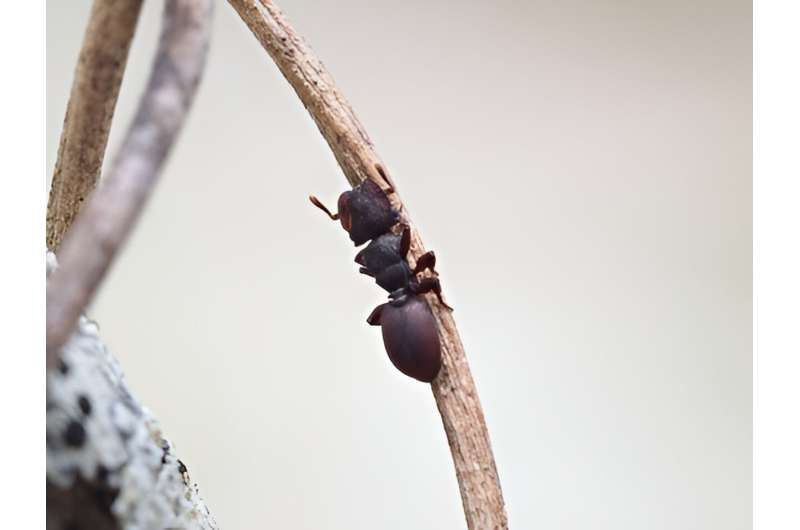This article has been reviewed according to Science X's editorial process and policies. Editors have highlighted the following attributes while ensuring the content's credibility:
fact-checked
peer-reviewed publication
trusted source
proofread
New research reveals dynamic factors shaping biodiversity at small scales

The fundamental question of biodiversity research aims to better understand how many different species manage to coexist in one place. A group of researchers believe they now have a more robust picture of what this looks like at some of the finest local scales ever studied.
The new study, titled "Competition and habitat availability interact to structure arboreal ant communities across scales of ecological organization," published today in the journal Proceedings of the Royal Society B: Biological Sciences, explores the tensions between resource availability and competition among arboreal ants in the Dagny Johnson Key Largo Hammock Botanical State Park in Key Largo, Florida.
The Dagny Forest contains the largest contiguous tract of West Indian tropical hardwood hammock in the United States and is home to 84 protected species of plants and animals.
"The ant species we examined in this study only live in this unique patch of land off the tip of Florida and the Florida Keys. So, understanding what determines how many species are in this rare environment is a key question for conservation efforts," Max Adams, first study author and former postdoc at the George Washington University, says.
The GW team, including senior author Scott Powell, an associate professor of biology at GW, traveled to the Dagny Forest and focused on specific trees where the ants make nests in pockets of dead wood. They identified 176 Poisonwood trees and observed the community of ants living there over two years, between 2020 and 2022.
The researchers found that the same dynamics of resource availability and competition that exist at large scales—on a continent or within a large forest—are happening at the very small scales of these ant communities. Looking at these interactions in three different scales, the researchers found that the two factors flip flop in importance, meaning:
- At the scale of the whole tree, resource availability is more important. Determining how many species live in one tree is dependent on the amount of dead wood available.
- When you zoom in on the network of ants inside this tree, resource availability remains a key determining factor, but competition among different ant species starts to come into play. Here, the species start to directly compete with one another, by moving and bumping up against each other.
- Further zooming in on an individual ant nest, or ant home, all that matters is competition. The ants move resources depending upon how dangerous their neighbors are.
"This research reveals that both resource availability and competition among species are important for maintaining biodiverse communities, and that the relative importance of these two processes is dependent on the scale at which we examine biodiversity patterns," Powell says. "It also suggests that in our ongoing efforts to support and preserve biodiversity on a changing planet, important aspects of biodiversity scale up from fine-grained interactions with resources and among species at local scales."
This research will help conservationists promote biodiversity in Dagney and in other forests, an effort that will help keep both forests and the species that live there healthy, according to the authors. The research team also says this work reinforces what a healthy, good looking forest looks like in a system, as dead wood in a habitat that conservationists are trying to restore is critical for every species that make up a diverse community.
More information: Benjamin J. Adams et al, Competition and habitat availability interact to structure arboreal ant communities across scales of ecological organization, Proceedings of the Royal Society B: Biological Sciences (2023). DOI: 10.1098/rspb.2023.1290
Journal information: Proceedings of the Royal Society B
Provided by George Washington University


















